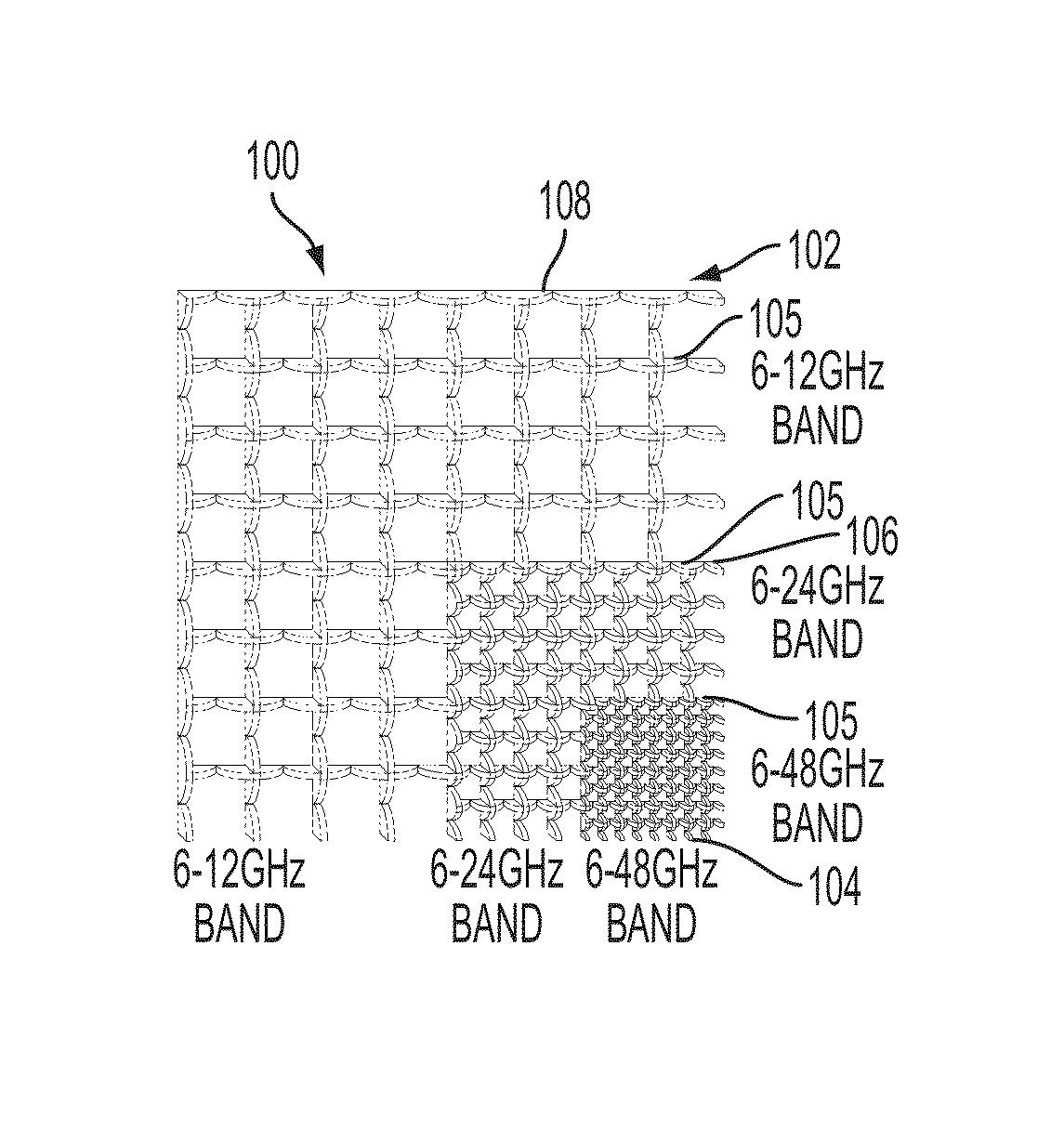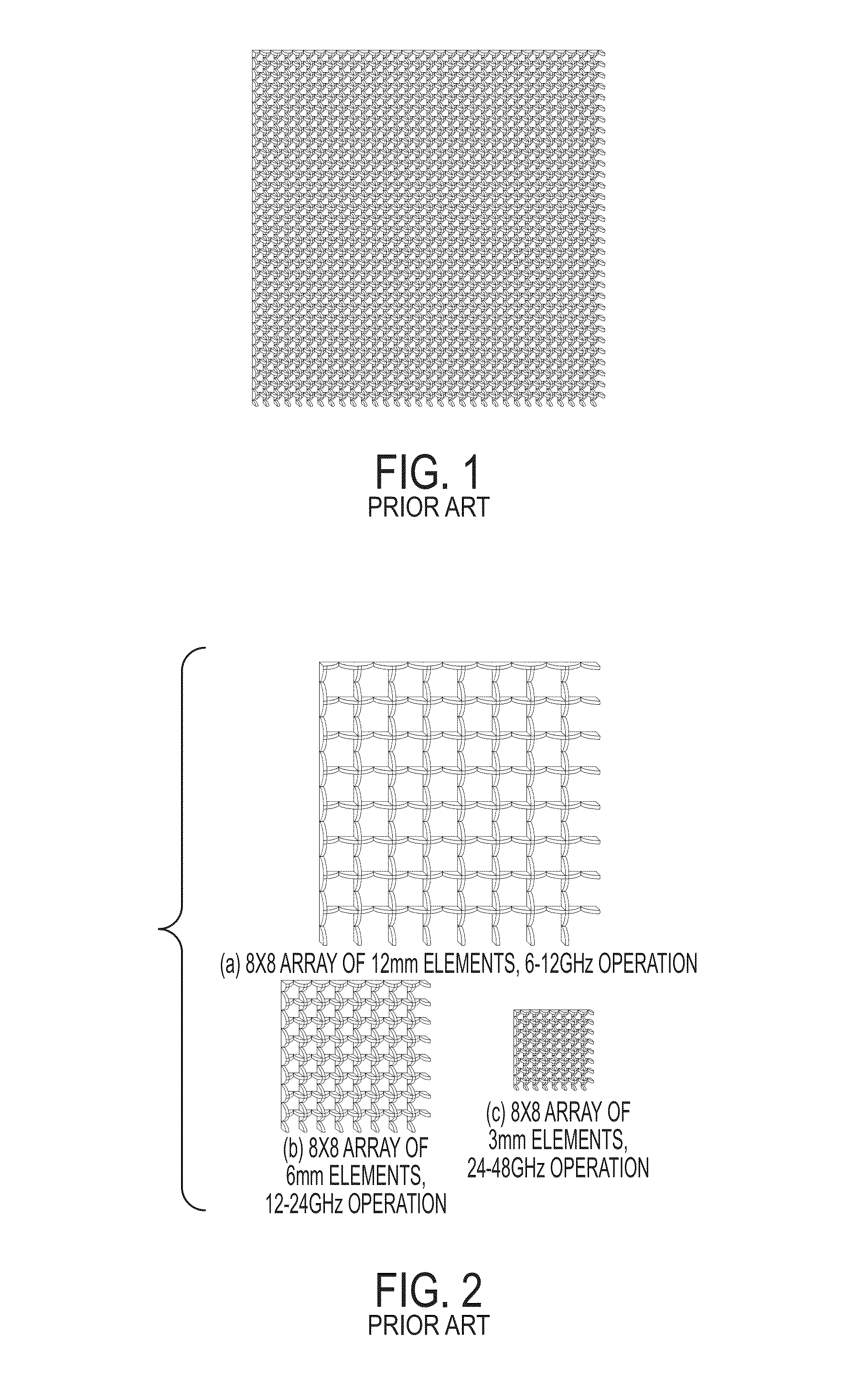Wavelength-scaled ultra-wideband antenna array
a wavelength-scaled array and antenna array technology, applied in the direction of slot antennas, antennas, electrically long antennas, etc., can solve the problems of inapplicability of cantrell concepts, inability to address the problem of excessive number of elements in large uwb systems, and high cost of traditional uwb arrays. , to achieve the effect of reducing the amount of front-end electronics, reducing the overall cost, and significant reducing the element coun
- Summary
- Abstract
- Description
- Claims
- Application Information
AI Technical Summary
Benefits of technology
Problems solved by technology
Method used
Image
Examples
Embodiment Construction
[0030]The following description of the invention assumes a UWB phased array with a 12-degree beamwidth and coverage from 6-48 GHz (8:1 bandwidth), although it should be understood and will be made clear that the invention is not limited to just this embodiment. For reference, we describe first the current state of prior art UWB. For operation at the high end of the frequency band (48 GHz), the requisite array element is roughly 3 mm in width (given typical ½ wavelength lattice spacing requirements). Referring now to FIG. 1, to achieve a 12-degree beamwidth at this frequency in a conventional prior art UWB array, an aperture of roughly four wavelengths is required, or equivalently, an 8×8 array of 3 mm elements. To achieve a 12-degree beamwidth three octaves lower in frequency (12 GHz), an aperture of roughly four wavelengths (and equivalently 100 mm diameter) is required. This equates to an array of 32×32 3 mm-wide elements, with 1,024 elements total (in each polarization).
[0031]Ref...
PUM
 Login to View More
Login to View More Abstract
Description
Claims
Application Information
 Login to View More
Login to View More - R&D
- Intellectual Property
- Life Sciences
- Materials
- Tech Scout
- Unparalleled Data Quality
- Higher Quality Content
- 60% Fewer Hallucinations
Browse by: Latest US Patents, China's latest patents, Technical Efficacy Thesaurus, Application Domain, Technology Topic, Popular Technical Reports.
© 2025 PatSnap. All rights reserved.Legal|Privacy policy|Modern Slavery Act Transparency Statement|Sitemap|About US| Contact US: help@patsnap.com



